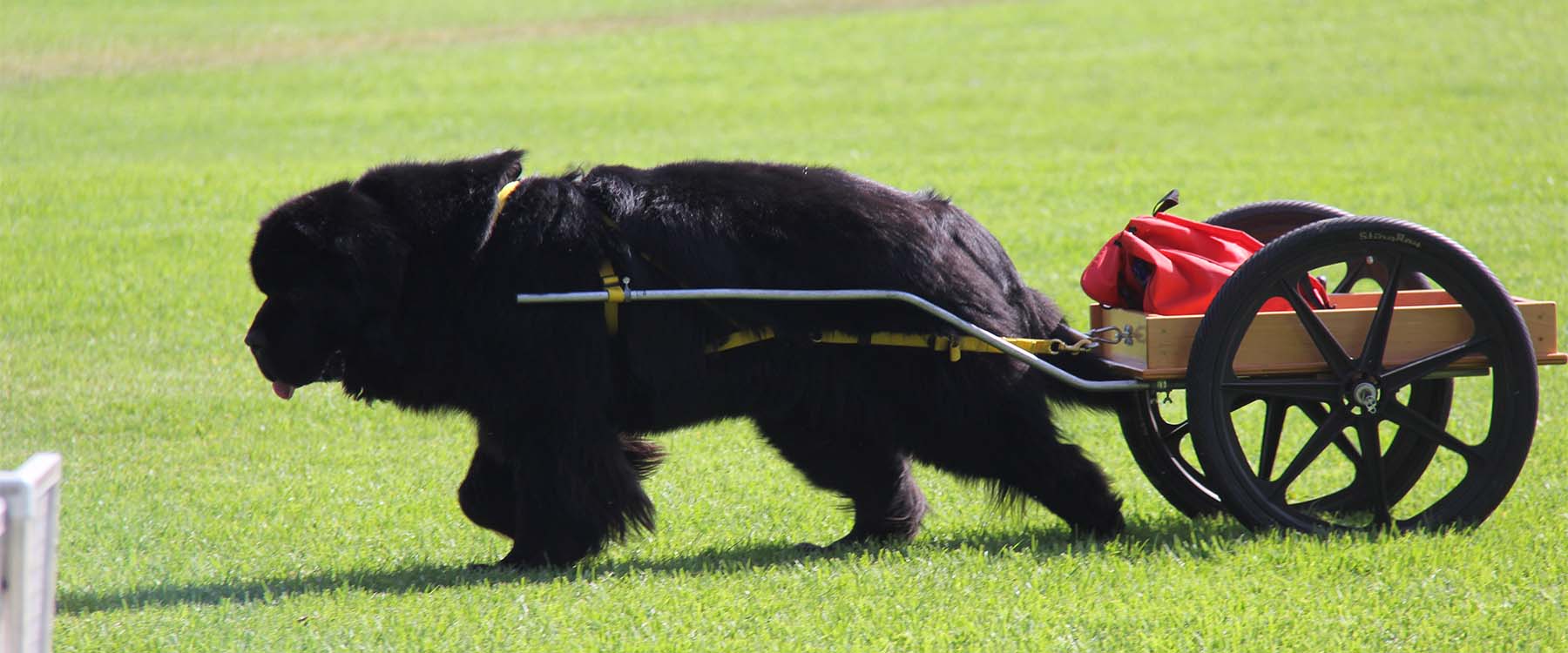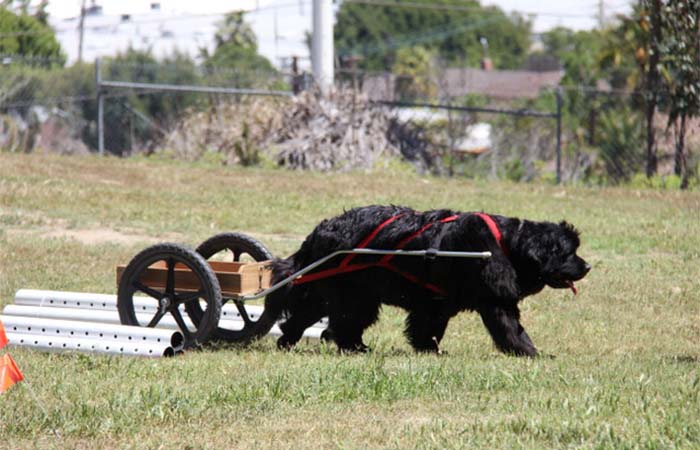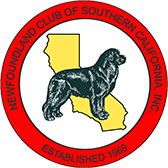
Draft Dog
This level uses skills required in BDD and builds on them. Beginner Draft Dog is not required to progress to Draft Dog.
Basic Control
All dogs entered in the Draft Dog test must perform Basic Control. The handler and dog are tested to verify the handler's control over the dog off leash before they are attached to an apparatus. There are two parts to Basic Control: Controlled Walking and a Recall.
- Controlled Walking: The dog must walk with the handler in response to the commands given and must remain in reach of the handler the majority of the time.
- Recall: This is performed following Controlled Walking. The dog must stay in a sit until called by the handler. The dog will come close enough to be touched by the handler.
Harnessing, Hitching & Equipment Check
Using equipment provided by the handler, the handler harnesses and hitches the dog in this exercise. The dog must demonstrate a willingness to be harnessed and hitched to the draft apparatus. Once harnessed the handler commands the dog to back up, in the direction of the draft apparatus. Next, the handler hitches the dog to the draft apparatus. When the dog is completely hitched, the judges will indicate that the dog and handler are to move to a predetermined location and stop. At this time, the judges will go over the equipment to be sure that it fits and is adjusted correctly.
Maneuvering Course & Basic Commands
The handler should not touch the dog or draft apparatus during this exercise. The handler may command and encourage the dog. The course must cover at least 150 yards and include circular patterns one in each direction, broad curves, ninety-degree turns (at least one to the left and one to the right), at least two narrow areas six or more feet long, a removable obstacle, walking at a slow speed, a back-up attached to the apparatus, and a halt. The handler, with the dog off lead and hitched to the draft apparatus, hauls through the course at a normal working speed. At appropriate locations along the maneuvering course, the judges will command the handler and dog to slow, halt, and back at least three feet.

Three-Minute Out-of-Sight & Freight Load
In preparation for this group exercise, the handlers will begin with the dog harnessed and hitched. This exercise is divided into two parts as follows:
- Three Minute Out-of-Sight:The handlers will leave their dogs and will go out of sight for three minutes. The handlers return to their dogs at the conclusion of the three minutes.
- Freight Load:The handler must select an appropriate freight load for the apparatus, test course and the dog that is no less then twenty-five pounds. The handler must load the cart evenly and secure the load so that it does not shift when the apparatus moves. After the all dogs have their weight loaded into the cart, the dogs and handlers will move as a group to the beginning of the distance freight haul area.
Distance Freight Haul
This is a group exercise, and each dog will haul a loaded apparatus on a course that is at least one mile in length. At the completion of the distance freight haul, the handler will wait for a judge to verify that the dog cooperates with the handler while being unhitched from the draft apparatus. Once the dog is unhitched, a judge will state that the exercise is finished.
Teams
Team entries will perform the same exercises as individual entries except that the handler works with more than one dog in the test area at once. Also, the minimum weight for the freight load is multiplied by the number of dogs in the team.
Intriguing Distraction
Though a planned distraction is no longer required, if a naturally occurring intriguing distraction appears during the test, the dog’s reaction will still be judged. If the dog stops to watch the distraction, the handler should encourage the dog to proceed when appropriate to do so.
